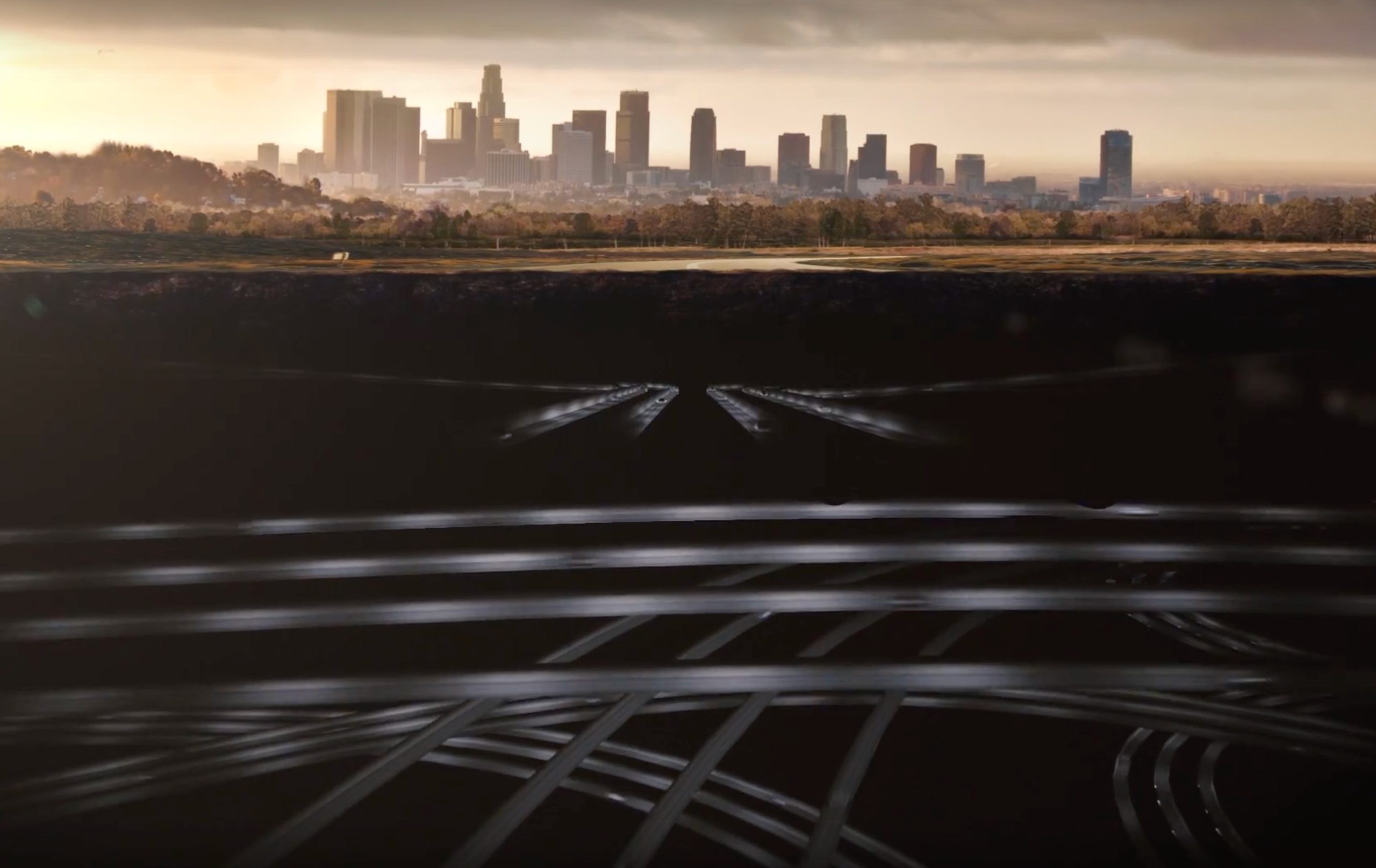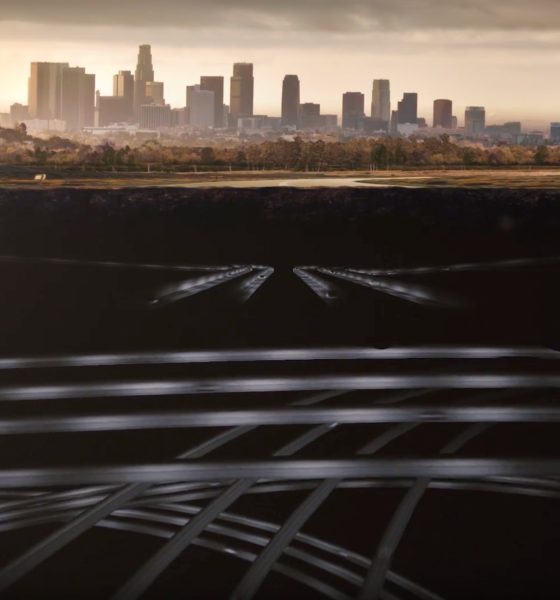

News
Elon Musk’s Boring Company wins Chicago-O’Hare high-speed tunnel project
Three months after The Boring Company was selected as a finalist in a bid for Chicago’s high-speed transit tunnel, the office of Mayor Rahm Emanuel confirmed on Wednesday that Elon Musk’s Boring Co. has been chosen to build the express train that will connect O’Hare International Airport with downtown Chicago.
The California-based tunneling startup beat out a field of competition, including finalist O’Hare Xpress LLC — a consortium that includes participants from Meridiam, Antarctica Capital, JLC Infrastructure, First Transit, and UK-based Mott MacDonald, the design engineer for London’s Heathrow airport terminal.
Musk and the Mayor of Chicago are expected to formally announce the proposal on Thursday, according to the Chicago Tribune.
Project specifics for the high-speed transit system have yet to be released. However, a description for the project, originally outlined in the initial Request for Qualification by the Chicago Infrastructure Trust, calls for a system that will “improve transportation between O’Hare International Airport and downtown Chicago by providing faster, more direct, and more reliable service.
The Boring Company’s transit system, likely in the form of underground high-speed tunnels, will come as a relief to the travelers who currently spend 40 minutes or more and pay as much as $60 for travel by taxi from the Loop, Chicago’s downtown central business district, and O’Hare International Airport. Passengers will be able to travel at high speed between the two destinations in as little as 12 minutes and at a cost of $20 to $25 per trip.
ALSO SEE: Elon Musk reiterates plan to use Boring Co. bricks for affordable housing
In addition to providing a much-needed express transportation to O’Hare, Boring Company will not rely on taxpayer support to fund the project, as outlined in the proposal. The lack of financial support from the city makes the multi-billion dollar project more ambitious than it already is. “We set forth a pretty ambitious proposal for fast service from downtown to O’Hare at no public cost,” said Deputy Mayor Bob Rivkin, adding, “One is proposing a more traditional rapid rail service. The other is proposing a tunnel service. Cost components will be different. But the city won’t be on the hook for any of it,”
The transit system will be part of an $8.5 billion overhaul of O’Hare airport. The Boring Company estimates project costs to come in below $1 billion.
Still, a lot remains to be seen from Elon Musk’s tunneling venture, which to date has only embarked on smaller scale test projects in Los Angeles and more recently approved by the State of Maryland to construct a 10-mile D.C. to Baltimore test tunnel. With ambitious goals to circumvent LA’s infamous soul-destroying traffic, Musk’s Boring Company plans to connect major sections of Los Angeles with tunnels that would transport passengers in high-speed, all-electric pods.
The company is near completion on a test tunnel beneath SpaceX and will offer “free demo rides” to the public, barring final regulatory approval.

Elon Musk
Elon Musk confirms xAI’s purchase of five 380 MW natural gas turbines
The deal, which was confirmed by Musk on X, highlights xAI’s effort to aggressively scale its operations.

xAI, Elon Musk’s artificial intelligence startup, has purchased five additional 380 MW natural gas turbines from South Korea’s Doosan Enerbility to power its growing supercomputer clusters.
The deal, which was confirmed by Musk on X, highlights xAI’s effort to aggressively scale its operations.
xAI’s turbine deal details
News of xAI’s new turbines was shared on social media platform X, with user @SemiAnalysis_ stating that the turbines were produced by South Korea’s Doosan Enerbility. As noted in an Asian Business Daily report, Doosan Enerbility announced last October that it signed a contract to supply two 380 MW gas turbines for a major U.S. tech company. Doosan later noted in December that it secured an order for three more 380 MW gas turbines.
As per the X user, the gas turbines would power an additional 600,000+ GB200 NVL72 equivalent size cluster. This should make xAI’s facilities among the largest in the world. In a reply, Elon Musk confirmed that xAI did purchase the turbines. “True,” Musk wrote in a post on X.
xAI’s ambitions
Recent reports have indicated that xAI closed an upsized $20 billion Series E funding round, exceeding the initial $15 billion target to fuel rapid infrastructure scaling and AI product development. The funding, as per the AI startup, “will accelerate our world-leading infrastructure buildout, enable the rapid development and deployment of transformative AI products.”
The company also teased the rollout of its upcoming frontier AI model. “Looking ahead, Grok 5 is currently in training, and we are focused on launching innovative new consumer and enterprise products that harness the power of Grok, Colossus, and 𝕏 to transform how we live, work, and play,” xAI wrote in a post on its website.
Elon Musk
Elon Musk’s xAI closes upsized $20B Series E funding round
xAI announced the investment round in a post on its official website.

xAI has closed an upsized $20 billion Series E funding round, exceeding the initial $15 billion target to fuel rapid infrastructure scaling and AI product development.
xAI announced the investment round in a post on its official website.
A $20 billion Series E round
As noted by the artificial intelligence startup in its post, the Series E funding round attracted a diverse group of investors, including Valor Equity Partners, Stepstone Group, Fidelity Management & Research Company, Qatar Investment Authority, MGX, and Baron Capital Group, among others.
Strategic partners NVIDIA and Cisco Investments also continued support for building the world’s largest GPU clusters.
As xAI stated, “This financing will accelerate our world-leading infrastructure buildout, enable the rapid development and deployment of transformative AI products reaching billions of users, and fuel groundbreaking research advancing xAI’s core mission: Understanding the Universe.”
xAI’s core mission
Th Series E funding builds on xAI’s previous rounds, powering Grok advancements and massive compute expansions like the Memphis supercluster. The upsized demand reflects growing recognition of xAI’s potential in frontier AI.
xAI also highlighted several of its breakthroughs in 2025, from the buildout of Colossus I and II, which ended with over 1 million H100 GPU equivalents, and the rollout of the Grok 4 Series, Grok Voice, and Grok Imagine, among others. The company also confirmed that work is already underway to train the flagship large language model’s next iteration, Grok 5.
“Looking ahead, Grok 5 is currently in training, and we are focused on launching innovative new consumer and enterprise products that harness the power of Grok, Colossus, and 𝕏 to transform how we live, work, and play,” xAI wrote.
Investor's Corner
Tesla gets price target bump, citing growing lead in self-driving

Tesla (NASDAQ: TSLA) stock received a price target update from Pierre Ferragu of Wall Street firm New Street Research, citing the company’s growing lead in self-driving and autonomy.
On Tuesday, Ferragu bumped his price target from $520 to $600, stating that the consensus from the Consumer Electronics Show in Las Vegas was that Tesla’s lead in autonomy has been sustained, is growing, and sits at a multiple-year lead over its competitors.
CES 2026 validates Tesla’s FSD strategy, but there’s a big lag for rivals: analyst
“The signal from Vegas is loud and clear,” the analyst writes. “The industry isn’t catching up to Tesla; it is actively validating Tesla’s strategy…just with a 12-year lag.”
The note shows that the company’s prowess in vehicle autonomy is being solidified by lagging competitors that claim to have the best method. The only problem is that Tesla’s Vision-based approach, which it adopted back in 2022 with the Model 3 and Model Y initially, has been proven to be more effective than competitors’ approach, which utilizes other technology, such as LiDAR and sensors.
Currently, Tesla shares are sitting at around $433, as the company’s stock price closed at $432.96 on Tuesday afternoon.
Ferragu’s consensus on Tesla shares echoes that of other Wall Street analysts who are bullish on the company’s stock and position within the AI, autonomy, and robotics sector.
Dan Ives of Wedbush wrote in a note in mid-December that he anticipates Tesla having a massive 2026, and could reach a $3 trillion valuation this year, especially with the “AI chapter” taking hold of the narrative at the company.
Ives also said that the big step in the right direction for Tesla will be initiating production of the Cybercab, as well as expanding on the Robotaxi program through the next 12 months:
“…as full-scale volume production begins with the autonomous and robotics roadmap…The company has started to test the all-important Cybercab in Austin over the past few weeks, which is an incremental step towards launching in 2026 with important volume production of Cybercabs starting in April/May, which remains the golden goose in unlocking TSLA’s AI valuation.”
Tesla analyst breaks down delivery report: ‘A step in the right direction’
Tesla has transitioned from an automaker to a full-fledged AI company, and its Robotaxi and Cybercab programs, fueled by the Full Self-Driving suite, are leading the charge moving forward. In 2026, there are major goals the company has outlined. The first is removing Safety Drivers from vehicles in Austin, Texas, one of the areas where it operates a ride-hailing service within the U.S.
Ultimately, Tesla will aim to launch a Level 5 autonomy suite to the public in the coming years.








